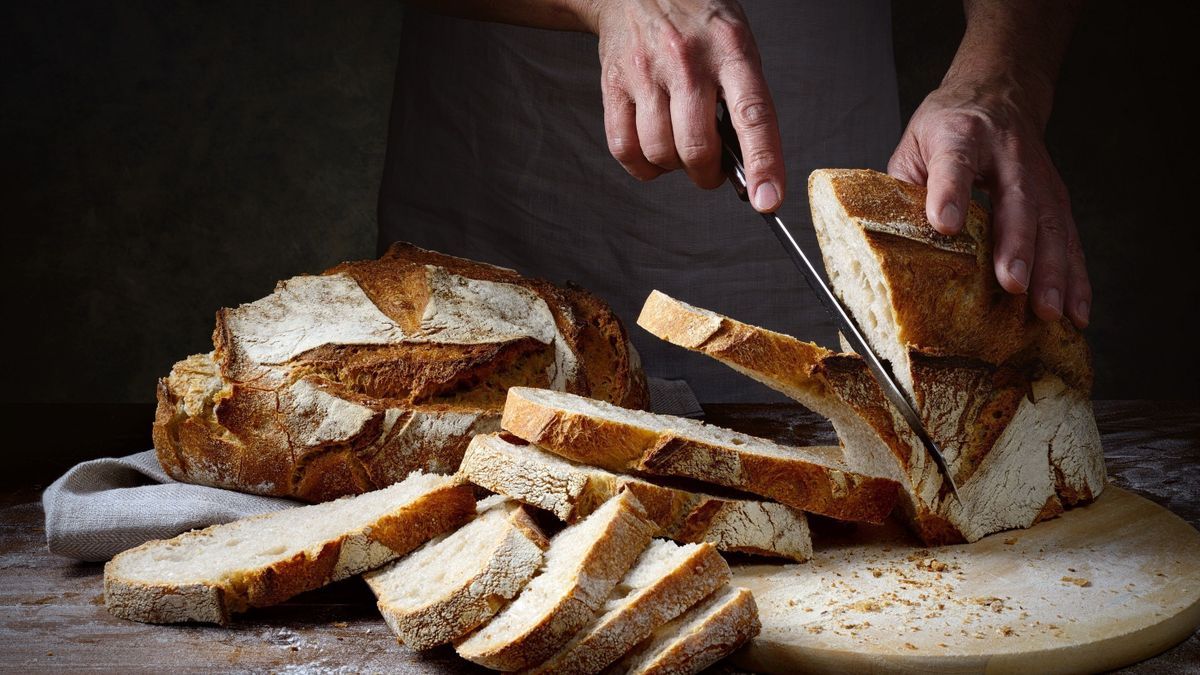
While Europe regained its title of world bakery champion, sixteen years after its last victory, the Sirha Europain trade fair where the tests took place was also an opportunity to present new baking trends. In a context very disrupted by concepts like the Marie Blachère chain accused of cannibalizing the activity of artisans by hammering prices, the neighborhood bakery manages to keep flavor thanks to these three ways of renewing its offer.
Ancient wheat flours
In January 2023, when Ophélie Barès decided to open her bakery-pastry shop in the Paris region, in Asnières-sur-Seine, the young pastry chef trained in Parisian palaces and passed through the Europe 2 cathode laboratory in the show “Qui will be the next great pastry chef?”, devotes a gourmet cult to the combination of bread and cheese. In her evocatively named boutique, Encore, Ophélie Barès has chosen not to use just any wheat flour for her breads, but khorasan, an ancient variety from Iran.
For his part, when the Bristol decided to open a bakery workshop in the basement, the famous Parisian palace where people flock to taste the three-star cuisine of Eric Frechon, the chef also chose to make the loaf from this wheat origin. Chefs recognize its ability to produce very colorful breads with a slightly caramelized taste. Above all, khorasan contains 20 to 40% more protein than soft wheat.
The increasingly marked presence of ancient wheat in the manufacture of bread is in fact in the wake of the popularity of the products of Roland Feuillas, an artisan baker from Aude who has brought Rouge flours up to date. from Bordeaux, red Amidonnier or even Barbu de Roussillon whose unique flavors have inspired great chefs like William Ledeuil. In Paris, the chef uses the raw materials of this farmer-baker from Cucugnan to serve his famous pasta at the Kitchen Ter(re) restaurant.
Anti-waste
It’s a concept that could multiply like hot cakes, as it responds both to the challenges of reducing food waste and to the need to find a good plan to eat better and inexpensively. In Paris, in the 11th arrondissement, two young entrepreneurs had the ingenious idea of opening a completely new type of bakery, which collects unsold items from other bakeries to give them body before offering them at a lower cost. The address is called Demain.
The croissants are topped with ham, the Swiss breads are warmed and the sourdough breads have more accessible prices than in the first bakery that made them. A win-win recipe.
The return of the taste for sourdough
Just last week, it was a young couple from the Val d’Oise, composed of Damien Houpin and Mélanie Tellier, who in turn launched into the baking adventure, based on a precise concept : rely on sourdough to deliver breads but also brioches or even nutritious panettones.
Like this new address called Mouillette located in Enghien-les-Bains, many bakeries have dusted off the sourdough recipe to reintegrate it into their operations. With water and wheat or rye flour, we make a living material which ferments and which we use to make a ball. This ingredient, rich in micro-organisms, has the power to benefit the intestinal flora. It stands out, among other things, for its acidity which will give this unique taste to bread made from sourdough. The advantages are numerous, such as extending the shelf life. This is what can explain the success of sourdough breads – if not their increasingly strong presence in recent years.
Remember that the recipe was highlighted during the first confinement when the French had enough time to prepare it themselves. Because what justifies the high price of sourdough bread is the time and rigor necessary to prepare this mixture which must be constantly fed to keep the micro-organisms alive. In Italian Puglia, a sourdough bread called Viviana owes its legend not only to its ancestral flour, but also to its more than 130 year old sourdough!

